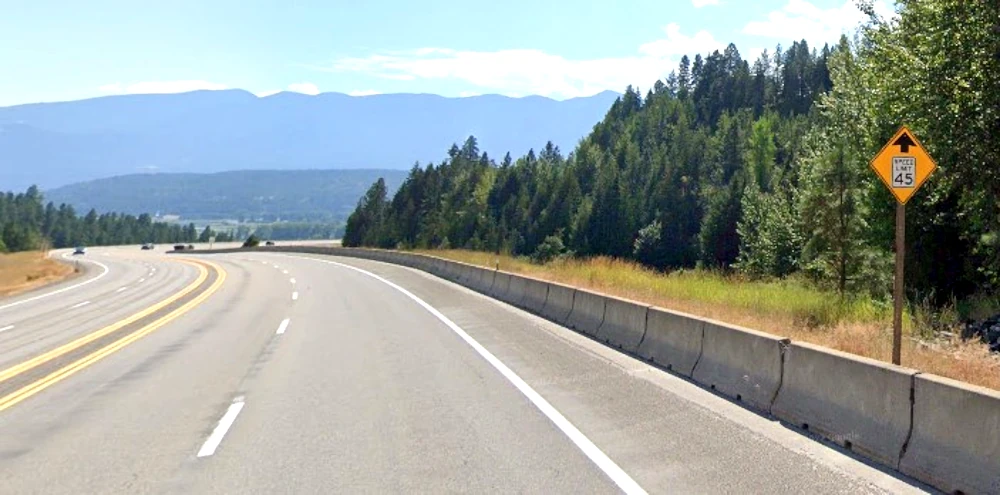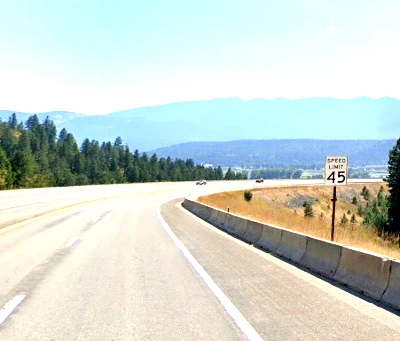
By Mike Weland
On the afternoon of November 29, Mitchell Walters was driving a 2007 black Jeep Wrangler west on Highway 2, anticipating Christmas. It was Black Friday and he had a list of presents to buy. He turned south at Three Mile toward Bonners Ferry and the stores he planned to visit. He wasn’t distracted, but he was in a happy place, thinking of the joy he’d be bringing home to Troy to wrap and stow away that evening, to be redeemed for laughter and squeals and the biggest bear hugs ever just under a month away on Christmas.

Driving down a winding six-percent grade at the 55 miles per hour speed limit, an easy, gentle descent, he saw the sign alerting him that the speed limit dropped to 45 miles-an-hour ahead, and there it was at a bend just down the highway.
Beyond it the highway continues in a downhill rolling curve to the right, rounding a hill that opens vision in increments — the view far more engaging looking to your left down the Kootenai River than the drab hillside you’re turning into until at the bottom you leave the curve and stretched out before is beautiful downtown Bonners Ferry. Just before the view opens up you pass a big “Welcome to Bonners Ferry” and as you pass it, with no yellow “Speed Limit Ahead 35” sign to give notice, you catch sight of a sign just ahead to your right, white with black lettering.
If you don’t know it’s there and you’re in a cluster of vehicles, it falls out of sight behind you almost before you recognize what it was, a speed limit sign stepping the speed limit down to 35 miles an hour. Unlike the 45 reduction that preceded it, there was no yellow sign alerting that a white speed limit sign stood ahead.
On a level grade, if you’re going the speed limit and take your foot off the accelerator at the “speed limit ahead” sign, your car will slow to the new speed limit by the time you reach the speed limit. On a six-percent downhill grade, letting off the gas isn’t enough, a car will speed up unless the brakes are applied.
When the flashing lights came on, Walters was traveling at 50 miles per hour, according to Idaho Uniform Citation #BFP64000001145, issued at 2:15 p.m. on Highway 95 at Comanche, charging him with an infraction speeding violation.
Walters does not dispute that he was speeding. He isn’t paying the $90 fine though. Not quite yet anyway. Instead, he will challenge the ticket in court, contending that two-mile stretch of highway from Comanche Street north is a speed trap, hurting not only motorists caught in it, but local businesses as well.
“How many Christmas budgets for Black Friday spending were severely damaged because of a traffic citation?” he asked in an addendum filed with the case. “What was the financial loss to local retailers and businesses as a result of the many citations issued that Black Friday? Why would any public policy rely upon a speed trap for revenue generation?”
Walters has better credentials than most to make that claim. A police officer from 1984 until retiring in 2009, he is POST certified in Idaho, Washington and Montana, with intermediate, advanced, supervisory, command and administrative certificates. He’s a graduate of the FBI Command College. Born and raised in Rexburg, he earned associate’s degrees in law enforcement and arts and science from Ricks College in Rexburg in 1984 and a Bachelor of Science in biology at Idaho State University in 1987, with coursework for his masters in sociology and criminology.
He launched his 40-plus year law enforcement career in 1984 as a loss prevention and risk management manager for Sears in Pocatello and Twin Falls until 1991, and as a student police officer at ISU, where as a sergeant he supervised 20 subordinate officers. The last 14 years of his law enforcement career he was chief of police in Troy, retiring in 2009.
He is still active as an electronic and physical security professional at Lookout Security and Investigation Inc., installing and maintaining security systems, doing private investigative work, serving legal papers across several counties.
Calling the way his ticket was issued bad public policy, it’s the principal of it, he said, that’s making him challenge the ticket rather than simply pay the fine and be done with it.
“It’s so blatant it looks like it was designed to target Canadians and Montanans,” he said. “Coming into town from the south you’ve got a straight road, flat grade, and five signs on the speed limit. There’s often a portable radar speed detector set up to tell you how fast you’re going.”
If you get a ticket there, you deserve it.
Coming in from the north you have a two-mile stretch on a six-percent downhill grade going in a right-hand curve. It should have as many or more speed limit signs as the highway coming in from the south.
It has three, with no warning that another speed reduction lies ahead as you round that last curve into town. But what Walters found egregious was that the officer who ticketed him was lying in wait, hidden.
“Traffic enforcement isn’t a cat and mouse game,” Walters said, “it’s about deterrence, not gotcha. That patrol car should have been in plain view to draw attention to the 35-mile-an hour speed limit sign ahead, not behind it, hidden. Safety is the whole point. How many times have you heard about the officer, or EMS causing the accident because people freak and everybody goes goofy?! Cat and mouse traffic enforcement will cost you respect.”
A court trial is set before Judge Justin Julian at 9:30 a.m. Thursday, February 13, upstairs at the Boundary County Courthouse, 6452 Kootenai Street, Bonners Ferry.
“Government should always remember whom they serve, and not create an ‘us against them’ mentality,” Walters said.